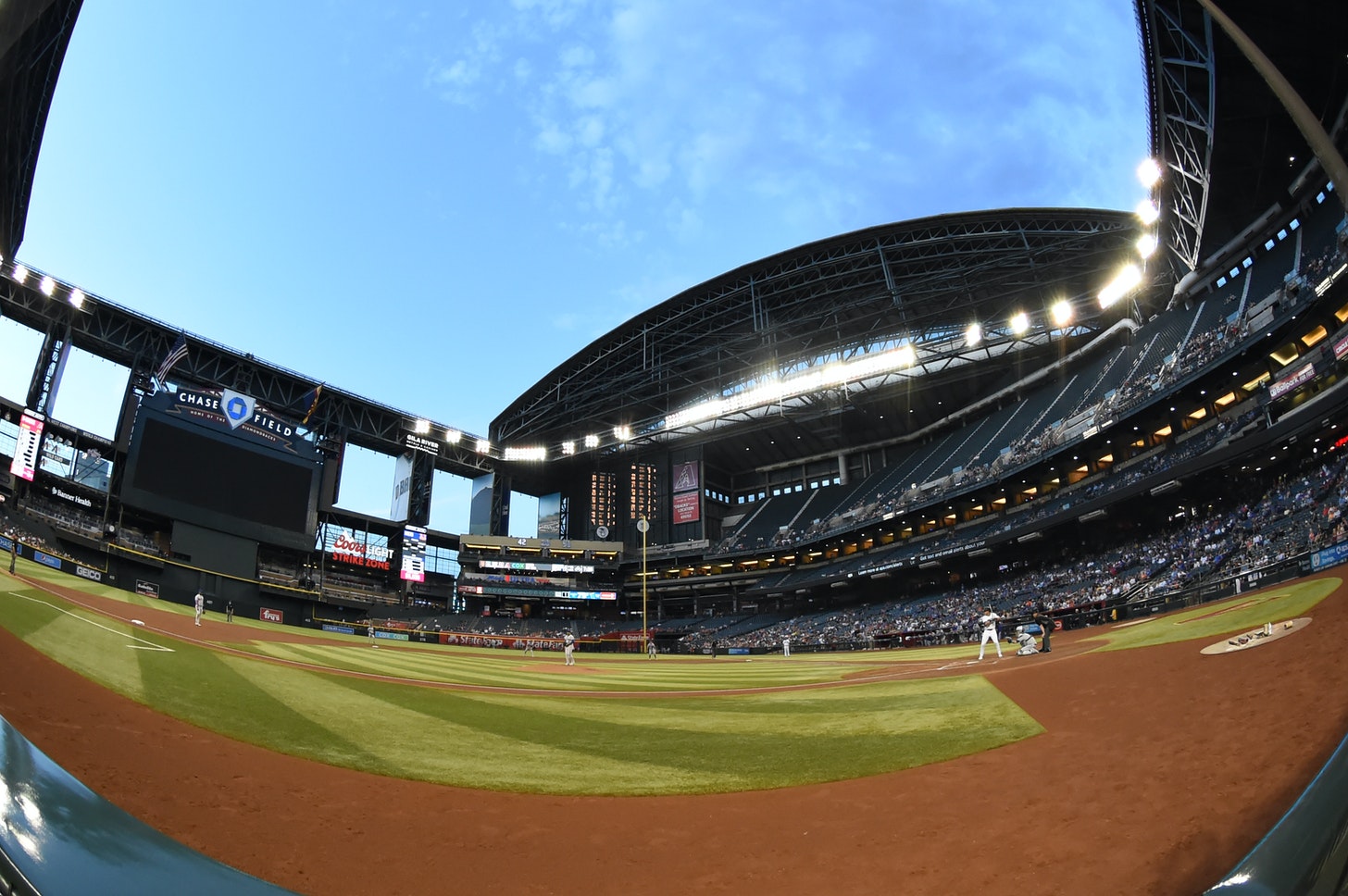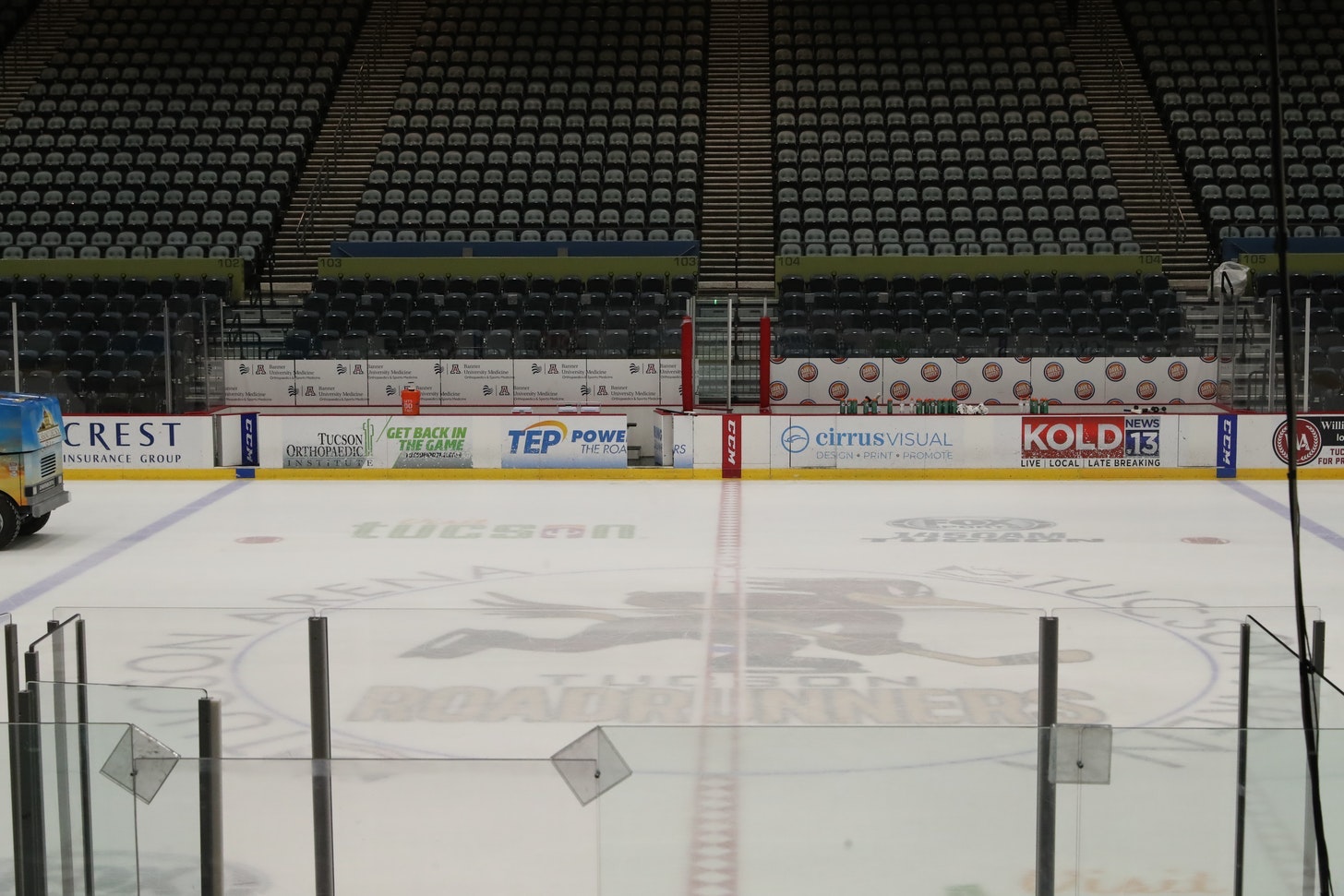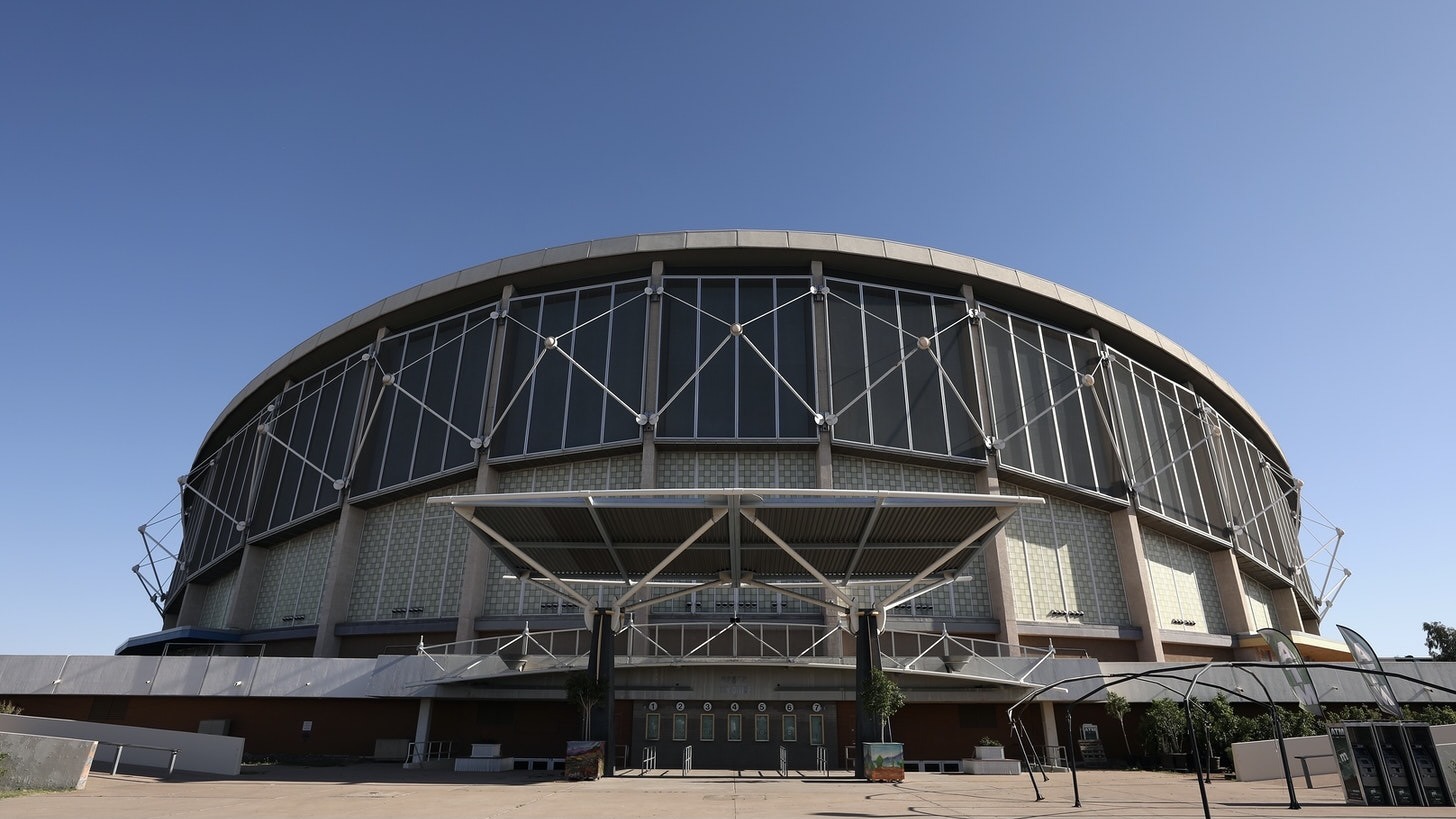© 2025 ALLCITY Network Inc.
All rights reserved.

On Dec. 30, 2020, Glendale city manager Kevin Phelps laid out the city’s position on a conference call with ASM Global executive Chuck Steedman, Coyotes President and CEO Xavier Gutierrez, and Coyotes President of Business Operations, Strategy and Development, Patrick Murphy.
“I made it abundantly clear that my hope would be that ASM and the Coyotes could reach agreement on a long-term lease (at Gila River Arena) of 15 to 20 years in length,” Phelps said. “However, I wanted Pat to know in no uncertain terms that if a long-term agreement could not be reached, then the city would exercise its right under the current use agreement and not extend beyond June 30, 2022.”
Phelps said that Gutierrez accused him of playing hardball.
“I responded that if indeed I was playing hardball, I would have waited until Dec. 31, 2021 to give them notice to vacate in six months on June 30,” Phelps said. “‘That,’ I said, ‘would be playing hardball,’ but my intent in saying this was to give the team a complete understanding of our position. I said “if I were the CEO of the Coyotes, I would prefer knowing the city’s position sooner rather than later, even if the news wasn’t to my liking.’”
Attempts to interview Gutierrez for this story were unsuccessful, but almost a year later, an internal belief still exists in team and league (commissioner Gary Bettman has said it himself) circles that the City of Glendale is bluffing. There is an internal belief – perhaps well founded – that Glendale’s rosy picture of its future is not in tune with economic reality.
There is an internal belief that Glendale would rather have 41 assured dates (plus preseason), than risk entering a concert and show market which multiple promoters have suggested would be fraught with challenges. There is an internal belief that, given the money that Glendale will have to spend to upgrade Gila River Arena for those shows, it will need the Coyotes in the short-term to avoid putting taxpayers on the hook for a facility that numerous analysts believe the city never should have built.
What isn’t being talked about nearly enough is this: What will the Coyotes do if Glendale is not bluffing? What will the team and owner Alex Meruelo do if they are locked out of the arena at the end of the fiscal year – or sooner if Glendale really decides to play hardball due to the Coyotes’ string of unpaid bills? How will the Coyotes bridge the gap between that date and the completion of their proposed-but-not-approved arena in Tempe?
“My advice has been, let’s focus on the plan for the building that’s going to come, and there are plenty of options to deal on an interim basis,” NHL commissioner Gary Bettman said Friday at the NHL Board of Governors meeting in Florida. “I don’t want to get into them now and start having comparative speculative stories. We’ll deal with it. I am not concerned. There are options that will work.”
Four months ago, I explored all of those options, and PHNX Sports recently toured Arizona Veterans Memorial Coliseum to get a sense of what it would take to get the former home of the Suns and Roadrunners ready for NHL hockey. Here is that comprehensive story.
Here is an update on the other venues. After two weeks of reporting, it is clear that the options aren’t nearly as plentiful as Bettman suggested.

Chase Field
In November, Chris Johnston reported on TSN’s Insider Trading that the Coyotes could play games at Chase Field, home of the Diamondbacks. Unfortunately for the Coyotes, little has changed on that front since my initial report on the venue in August.
A source familiar with that situation said that the Coyotes and Diamondbacks had preliminary talks about two months ago. The two sides have not had any discussions since then.
The MLB regular season begins in April and ends in October, while the NHL regular season begins in October and ends in April. In that respect, the venue would work, but that doesn’t account for the possibility of either team making the playoffs over the next four to five seasons – the amount of time it would likely take for the Coyotes to complete their Tempe arena.
Further complicating the Chase Field option is the fact that there are numerous scheduled events for next season. The Valley will host the Super Bowl in 2023 (at State Farm Stadium) and there are several spillover Super Bowl events planned for Chase. There is also an Elton John concert planned in November that will require several days to set up and break down, and Chase is scheduled to host games in the World Baseball Classic.
I asked the source if Chase would be a feasible option for the Coyotes in the 2022-23 season.
“Probably not for that season,” was the answer.
Playing NHL games at a baseball stadium is not unprecedented. The Tampa Bay Lightning played three seasons at Tropicana Field (then called the Thunderdome), before moving into their new arena downtown (now Amalie Arena).
“When I first came down here and was trying to find a place to play, I went over (to Thunderdome) to watch a tennis match because I knew John McEnroe pretty well and he was playing against Jimmy Connors in an exhibition, ” said Hockey Hall of Fame member Phil Esposito, who served as the Lightning’s president and general manager from 1992 until 1998. “I was intrigued by how they moved the stands in for the match and I said, ‘Shit, man, I think we can put an ice rink here.”
Esposito knew that for the growth of the sport in a non-hockey market, he needed to get kids in the stands so he called Wayne Gretzky and asked if he would mind Esposito selling a $99, upper-deck, season-ticket package in Gretzky’s name (and jersey number). Gretky agreed, the team rented enough chillers to compensate for Florida’s humidity and the Lightning were off and running. Esposito admits that the seating configuration was not ideal, but it helped the Lightning bridge the gap to their new arena, where they have won three Stanley Cups.
“The Coyotes need to get going on something because Bettman doesn’t want them to leave and neither does ownership; all of the owners,” Esposito said. “I think the Phoenix area is a hell of a market. They just put the fucking building in the wrong spot.”

ASU/Tucson/Prescott Valley
When I explored these three options in August, I assumed that they would not work because of their respective sizes.
Tucson Arena’s seating capacity for hockey is 6,791. The Findlay Toyota Center in Prescott Valley seats approximately 5,100, and ASU’s new arena, which will be ready this fall, seats 5,000.
Multiple sources said that the Coyotes are considering these options, or a combination of the three, and that option does not appear to concern the league.
“While we have arena standards, we would approach the entire situation in a way intended to accommodate the club’s needs in effectuating a successful transition to a new venue,” NHL deputy commissioner Bill Daly wrote in an email. “While there very well may be some, I can’t think of any hard and fast rules that couldn’t be relaxed to accommodate what is necessary.”
When I asked Daly specifically if the league would approve the Coyotes playing in an arena with a seating capacity as low as 5,000, Daly said it “depends on the totality of circumstances, but I wouldn’t rule it out.”
One advantage that ASU’s new facility and the Findlay Toyota Center have over Arizona Veterans Memorial Coliseum is the presence of luxury boxes/premium seating. ASU has incorporated club suites into its arena, and the Findlay Toyota Center has four luxury suites (including two party suites) and 400 club seats. While Tucson Arena currently does not have such amenities, Brett Fera, who covers the Roadrunners for the Arizona Daily Star, said there is ongoing, visible construction within the arena’s bowl.
“At the top of section 224, a row of about 10 seats or so appears to have been removed and a flat platform-like area with separated walls has been erected,” Fera said. “No seats have been put back, but if you ask me, it absolutely looks like some sort of premium seating area, and the way it’s been constructed, there’s certainly the ability to add at least a few more around the building.
“There also appears to be work on the upper level deck above the video board behind the south goal. In parts of that area, the concrete wall has been lowered by maybe 12 to 18 inches. Protective cabling – essentially see-through – is in place of that upper portion of concrete, meaning there could ostensibly be seating there where folks could actually see the ice surface below (previously, you could only see the ice when standing and looking over the protective wall). I could be wrong, but that deck is hardly used. It leads me to believe there might be an effort to also make that some sort of premium seating or corporate suite area.”
Fera asked the Roadrunners about the construction.
“While they’ve said they don’t have any details to share at this time, they did add that they are working on ‘enhancements to the fan experience’ that they hope will be in place sooner than later this current 2021-22 season,” he said.
While premium seating is an advantage, there are myriad issues at each of these sites aside from their capacity. Tucson’s team areas would need significant upgrades to accommodate an NHL team, especially if the AHL team is still playing there. Sources said that the Findlay Toyota Center needs significant upgrades in several areas, with one source saying the venue has fallen into disrepair over the years. The Central Hockey League’s Arizona Sundogs played there until 2014 when they folded, and the Suns development league team, the Northern Arizona Suns, departed early in 2020. The Indoor Football League’s Arizona Wranglers play there now.
Due to NCAA compliance issues, the Coyotes would not be permitted to use Sun Devil hockey’s team areas. They would have to build their own, without contribution from ASU, which does not need extra areas or it would have already built them.
A source familiar with the situation said that the Coyotes reached out to ASU “months, not weeks ago” about the possibility of hosting games there. While ASU did not close the door on that possibility, it did not give the Coyotes any assurances that it could happen either. Given the scheduling conflicts that ASU faces, the source said that the new arena might be able to host 10 to 15 Coyotes games.
Aside from ASU’s 24 home hockey dates, the venue also hosts ASU wrestling and gymnastics, with plans for a variety of shows and tournaments in the 2022-23 season.
The Sun Devil hockey team’s schedule for 2022-23 is already set. The team purposely opened on the road in case the arena is not ready for the start of the NCAA season. ASU’s first home series comes in the third week of October, and when the Sun Devils are home, they play series on Fridays and Saturdays, precluding the Coyotes from those enviable weekend dates.
There is some concern at ASU over whether multiple games would hurt their own attendance when fans have the option of choosing between NHL hockey and NCAA hockey. There are also issues of signage and advertising, all of which would benefit ASU and would not be negotiable, but the Sun Devils are still listening.
Beyond the smaller venues’ drawbacks, the decision to play at any one or all of these sites would put a significant strain on the Coyotes players, coaches, staff and fans. Where would the players and coaches live if the team chose to play in Prescott Valley or Tucson? Would the Coyotes foot the bill for that lodging, or would they really expect the team to commute two hours for those games?
What about the strain it would create for the already overworked equipment staff? How much would playing in those other venues impact the existing fan base in the Valley? How much media coverage would the Coyotes get in far smaller markets with far fewer media outlets? It’s doubtful that Valley media outlets would make the regular trek to either of those locations. And what would travel and lodging look like for visiting teams?
Beyond all of those considerations, consider the optics of an NHL team playing in a 5,000 to 7,000 seat venue. The Coyotes’ national image has already taken a beating. They are the butt of jokes in the U.S.; and Canada. That image would suffer far more if this decision were made, and it’s hard to envision any free agents signing up for this plan. The Coyotes currently have six players at the NHL signed beyond this season, and 12 signed at the minor-league level, per Cap Friendly; 20 total per Puck Pedia.

Time’s a wastin’
As recently as last month, Phelps said that Gutierrez called him about the possibility of extending the Coyotes’ lease at Gila River Arena for one more year. It is unclear if the Coyotes have a solution in mind after next season, or if they were simply trying to kick the can down farther down the road.
Phelps said that he took the proposal to the city council and the idea was outright rejected.
When Gutierrez appeared for his weekly segment with the team’s radio broadcast rights holder, Arizona Sports 98.7 FM on Dec. 3, he told show hosts Dave Burns and John Gambadoro: “There is progress, nothing to announce right now, but we are very much in the throes of negotiations for an interim solution while we, again, keep our eyes on the prize of the opportunity in Tempe. Nothing to announce but we are making significant progress in our negotiations but again, it’s going to be here.”
Gutierrez did not clarify what “here” meant and the show hosts did not ask, but with 6½ months until the team’s lease at Gila River Arena expires, and with 10 months until the 2022-23 NHL season begins, time is clearly a factor. It has already been a year since Phelps informed the Coyotes that the lease would not be renewed, but the Coyotes still have not provided any hint of their plans.
NHL teams typically submit their schedule requests for the next season during the first half of the previous season. Two NHL executives said that they were turned in three weeks ago (schedules are not finalized until the spring), but when I asked Daly if there were a deadline by which the Coyotes had to announce where they are playing next season, he said “not really.”
As detailed above, and in stories over the past year, the Coyotes’ time at Gila River Arena appears to be drawing to a close. There is no indication that Suns owner Robert Sarver has changed his mind about allowing the Coyotes to play at Footprint Center, and Chase Field has too many events to accommodate the Coyotes next season.
That leaves the time-worn Coliseum and a conglomeration of mid-sized venues around the state that would present logistical nightmares for players, coaches, managers, scouts, staff, media and fans. All of those groups would like some clarity soon, but one thing that Bettman did make clear last week is the same thing that he has made clear for the past two decades.
“The Coyotes aren’t going anywhere,” he said. “Well, they’re going somewhere else other than Glendale, but they’re not leaving the greater Phoenix area.”
Follow Craig Morgan on Twitter
Comments
Share your thoughts
Join the conversation



